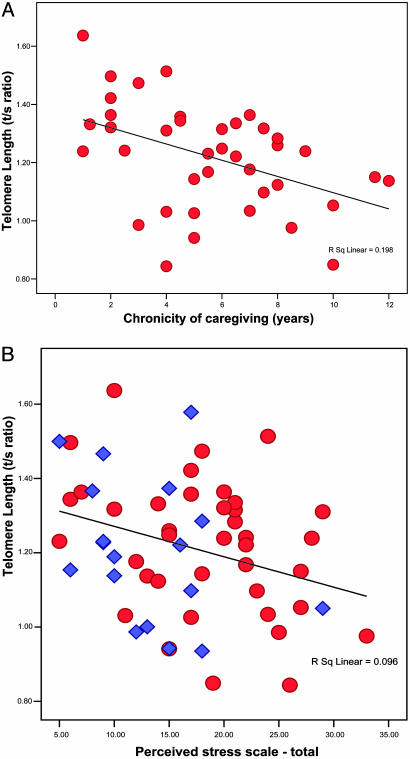Fig. 1.
Scatter plots of chronicity of stress by telomere length in caregivers and perceived stress scores by telomere length. (A) The zero-order correlation between chronicity of caregiving and mean telomere length, r,is –0.445 (P <0.01) and, adjusting for the mother's age, it remains significant (r =–0.40, P <0.01). To test whether the age of the child accounts for this relationship independently of caregiving, correlations between the age of the child and the mean telomere length were calculated in each group. The age of the child is related to shorter telomeres in the caregiver group (r =–0.45, P < 0.01) but not the control group (r = +0.22, P value not significant). These findings demonstrate that the relationship between chronicity of caregiving and mean telomere length is not simply due to either the mother's or child's older age. (B) Zero-order correlation across the sample is r = –0.31 (P < 0.01, n = 57). When the correlation is adjusted for age, BMI, smoking, and vitamin use, the correlation remained significant (r =–0.27, P < 0.05). In both the control (blue diamond) and high-stress (red circle) groups, the higher the stress level ranking, the lower the telomere length (controls, r =–0.34; caregivers, r =–0.36; adjusted for age). When the one particularly high-stress control subject is eliminated, there is still an association among the lower stress controls, showing that those with the lowest stress have the longest mean telomere length (r = –0.27).

